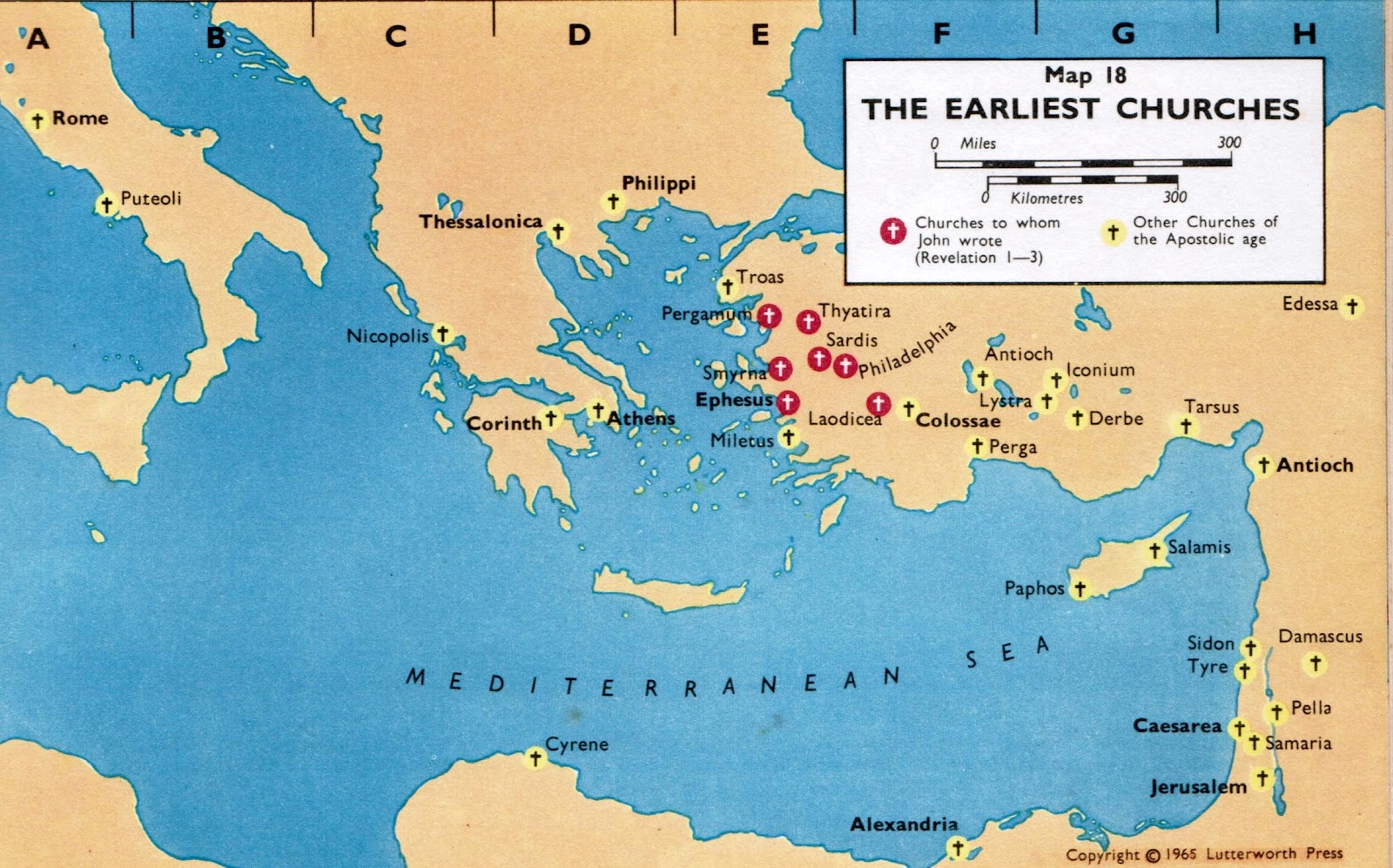Introduction
Author
The author identifies himself as Paul three times (1:1, 1:9, 1:19). The Early Church bears witness that this epistle was written by Paul. Only very few modern scholars have doubted this.
The text is distinctly Pauline. For example, if you compare the structure, content and language to Paul’s letter to the Philippians, you will find many similarities.
Location & Date of Composition
In the epistle, Paul indicates that he is in prison (1:1, 1:9, 1:10, 1:13, 1:23). This letter is therefore numbered among Paul’s “Captivity Epistles”:
1. Ephesians
2. Philippians
3. Colossians
4. Philemon
So where was Paul imprisoned? The problem is that, as any cursory reading of the Acts of the Apostles will show you, St. Paul got arrested a lot! Having said that, we really have three main options:
1. Caesarea (AD 57-59)
After his arrest in Jerusalem Paul is held in Caesarea for two years (Acts 23:31-35).
2. Rome (AD 60-62)
Paul was held under house arrest for about two years (Acts 28:16-31). Please note that we are not referring here to his later imprisonment at Rome at the Mamertine dungeon.
3. Somewhere else! (AD ?-?)
In 2 Cor 11:23 Paul mentions that he was imprisoned many other times.
At the end of Philemon, Paul lists several other people who are with him, some of whom we know traveled with him to Rome. For this and other reasons, the general scholarly consensus is that this letter to Philemon comes from Paul’s first Roman captivity described in Acts 28:16-31:
16 And when we came into Rome, Paul was allowed to stay by himself, with the soldier that guarded him. 30 And he lived there two whole years at his own expense, and welcomed all who came to him, 31 preaching the kingdom of God and teaching about the Lord Jesus Christ quite openly and unhindered. – Acts 28:16-31
This letter therefore dates from the early 60’s.
Destination
The letter is addressed to a Christian named Philemon and two other people, most likely Philemon’s wife (“Apphia”) and son (“Archippus”).
The letter doesn’t indicate the exact location of these people, but it is assumed that they were residents of Colossae or a neighbouring city in Asia Minor (modern Turkey). This assumption is based upon the common belief that the slave mentioned in this letter, Onesimus, is the same man delivering the Letter to the Colossians (Col 4:7-9).
Purpose
Paul has two purposes in writing this letter:
1. Request forgiveness of Onesimus
Paul is writing to Philemon to request that he forgive his runaway slave Onesimus (1:9,17). At the time, slavery was a well-accepted institution in the Roman Empire. In fact, there were more slaves than free (approximately 60 million in the First Century. Source: “The History of the Decline and Fall of the Roman Empire”, Edward Gibbon)! The master had power of life and death over his slaves.Some slaves were well educated and oversaw important tasks for their master, whereas others were maltreated. My old Latin teacher used to say that they were property, like a car.
2. Request preparations for his arrival
Paul appears to be under the impression that his captivity will soon be coming to an end. Here therefore tells Philemon that he will be visiting soon and asks Philemon to make preparations for his arrival (1:22).
Themes
Paul’s letter to Philemon is the shortest of St. Paul’s epistles. In fact, it’s more of a postcard than an epistle! It is also one of his most personal messages. There are no direct theological themes in the letter, but they act as the backdrop of Paul’s request for Philemon’s forgiveness of the runaway slave Onesimus. Given the preservation of this letter and its inclusion in the New Testament Canon, we may safely assume that Philemon honoured Paul’s request. Tradition says that Philemon later became the bishop of Ephesus, mentioned by St. Ignatius of Antioch in his Epistle to the Ephesians:
As soon as you heard that I was coming from Syria in chains for our common Name and hope, you hastened to see me. In the name of God, then, I received your whole multitude in the person of Onesimus, a man of inexpressible love, and your bishop here on earth. I pray you in the spirit of Jesus Christ to love him, and wish all of you to resemble him. Blessed, indeed, is He whose grace made you worthy to possess such a bishop. – St. Ignatius of Antioch to the Ephesians, Chapter 1
He was later to become a martyr.
